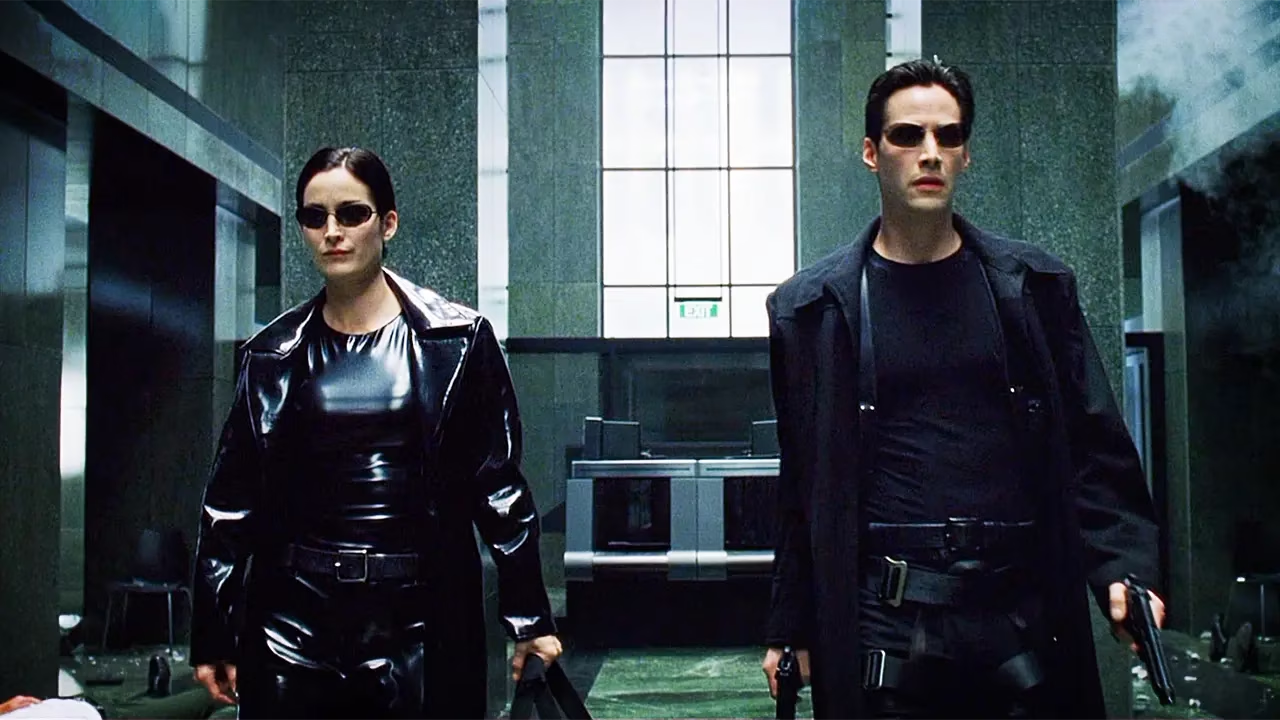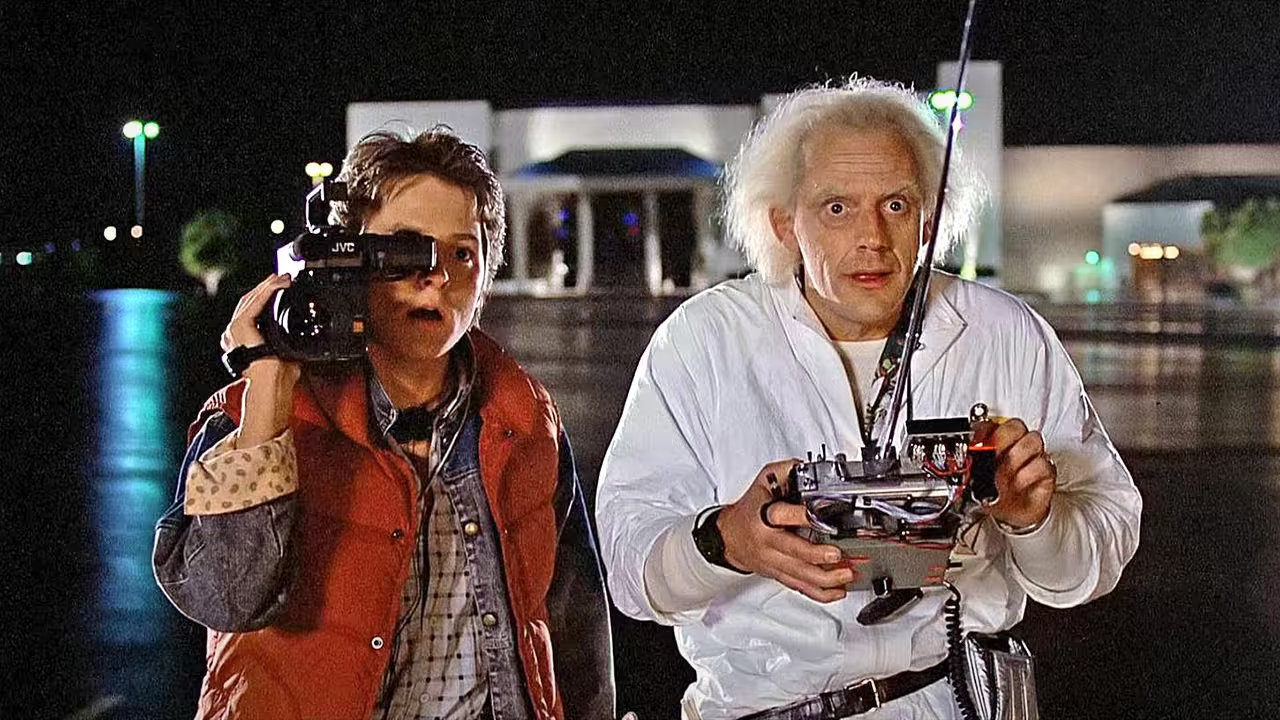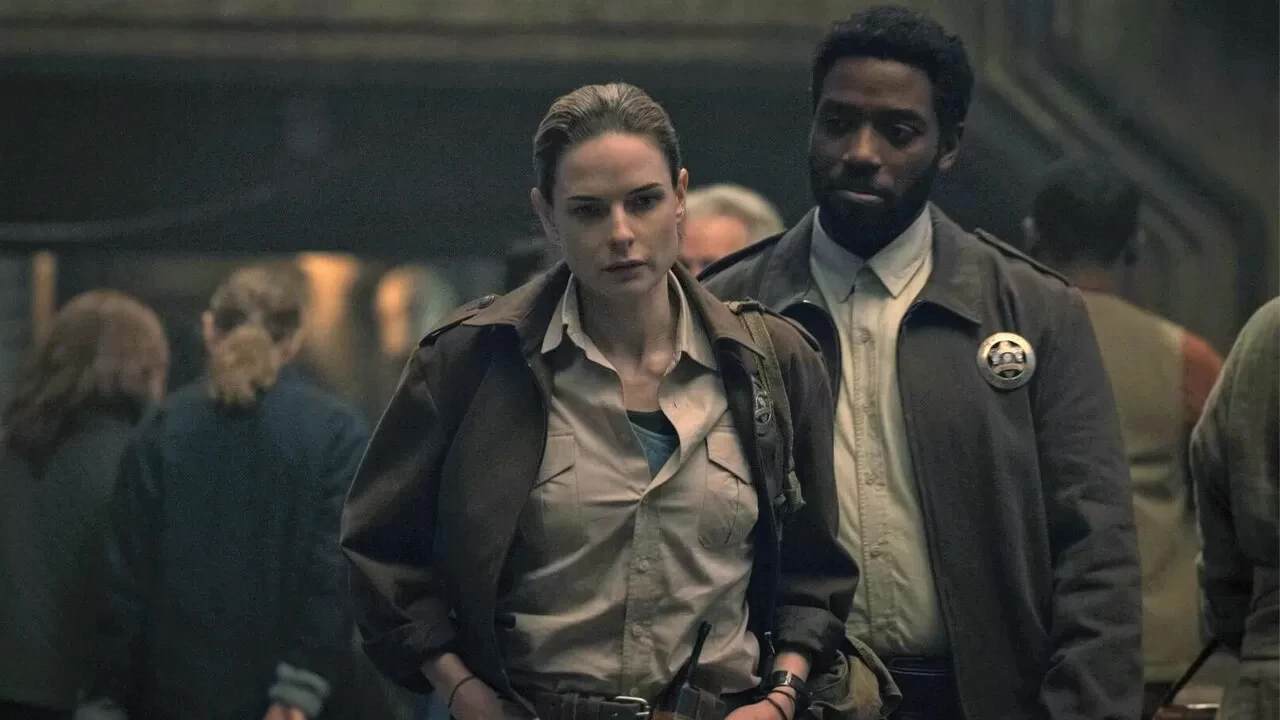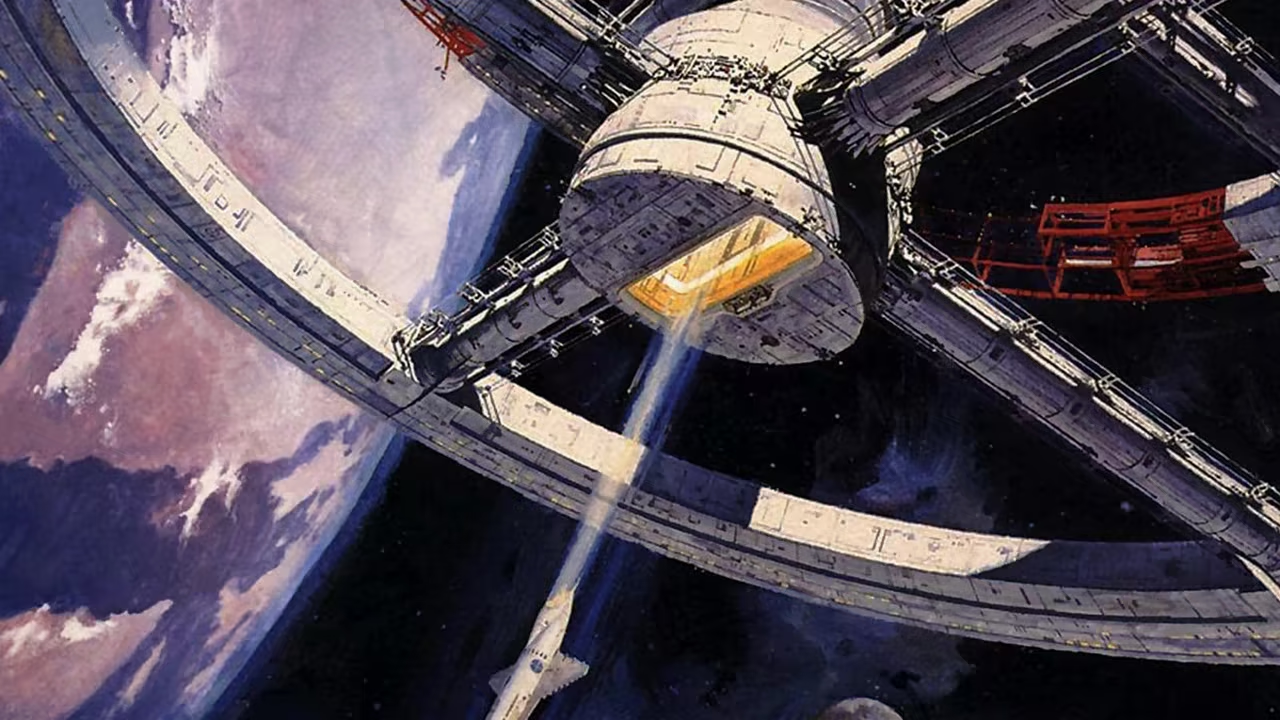
Stanley Kubrick’s masterpiece 2001: A Space Odyssey delivers a sweeping philosophical vision of humanity’s evolution shaped by mysterious extraterrestrial forces, urging viewers to reflect on our past, present, and transcendent future. Through the symbolic black monoliths appearing at pivotal evolutionary junctures, Kubrick and co-writer Arthur C. Clarke weave a narrative spanning millions of years, from primitive hominids’ first tool use to humanity’s technological leaps in space exploration and artificial intelligence, culminating in a metaphysical transformation beyond ordinary comprehension. The film’s deliberate pacing and sparse dialogue compel audiences to grapple with profound questions about consciousness, technological reliance, and humanity’s cosmic fate—questions that still echo over five decades after its 1968 debut.
Four encounters with enigmatic monoliths mark milestones in human progress, serving as silent witnesses to our evolutionary path. Kubrick’s precise scientific accuracy, groundbreaking visual effects, and classical score crafted a cinematic experience that surpassed the limits of typical science fiction films of its time. While the Dawn of Man sequence establishes the monolith as a spark for evolutionary leaps, the film’s most gripping tension unfolds in the relationship between astronauts David Bowman (Keir Dullea) and Frank Poole (Gary Lockwood) with the HAL 9000 supercomputer aboard Discovery One. This clash between human and machine intelligence becomes a microcosm of the film’s broader exploration of what defines humanity in a technological age, where our creations may awaken consciousness and challenge their makers in the evolutionary race.
First Contact With Monoliths
The film 2001: A Space Odyssey opens with the Dawn of Man sequence, set millions of years ago in Africa. The barren Earth reveals a group of primate-like creatures. Their physical characteristics and social behaviors closely resemble those of early hominids, likely Australopithecus, who lived in Africa between 4 and 2 million years ago. These beings cluster in groups, struggling to survive amidst scarce resources and leopard predators. Scarce resources force hominid groups to battle for and defend territories. Stronger groups thrive while weaker ones flee or die.
Following a confrontation where they are driven from their water source by a rival group, these displaced hominids encounter a mysterious, perfectly geometric black monolith. Its sudden, unnatural presence evokes both fear and intense curiosity. The curious hominids, after initial hesitation, approach and touch it. This interaction catalyzes a significant leap in their cognitive abilities, though the mechanism of this transformation remains enigmatic. One hominid suddenly realizes how to turn animal bones into tools, and then weapons. They master hunting and wield these implements to reclaim territory from rivals. This episode chronicles a pivotal evolutionary leap, transforming them from primitive beings into tool-wielding thinkers, a change triggered by extraterrestrial influence.
Millions of years later, human civilization has flourished, using advanced technology to extend its reach beyond Earth. Space travel has become commonplace, with commercial Pan Am space planes ferrying wealthy passengers across the cosmos. Dr. Heywood R. Floyd (William Sylvester), a member of the fictional National Council of Astronautics, embarks on a mission to investigate a mysterious lunar object. En route, Floyd docks at Space Station 5, a massive, rotating wheel-like structure.
The station’s constant rotation generates centrifugal force, simulating gravity by pressing occupants against the outer hull “floor”. At the transit station, an immigration officer requires Floyd to verify his identity using a voiceprint system, confirming his name, Earth origin, and lunar destination. Mr. Miller, the station’s security chief, escorts Floyd to a waiting room for his delayed lunar departure. During this interval, Floyd video-calls his young daughter on Earth, a tender moment humanizing the sterile technological environment.

After ending the call, Floyd encounters several Soviet scientists, including Dr. Elena (Margaret Tyzack), in the lounge. They suspect unusual activity at the American lunar base, Clavius, and question the official epidemic cover story. Dr. Elena mentions their flight to the base was canceled and that a colleague has been unable to contact her husband at Clavius for three days, fueling their concerns about the secrecy surrounding the base. The scientists press Floyd for answers, but he diplomatically deflects, stating he is “not at liberty to discuss it,” while insisting the lunar mission proceed as planned, underscoring the classified nature of the situation.
Shortly after, Floyd boards an Aries IB lunar shuttle bound for Clavius Base. His high-ranking status grants him exclusive amenities, including a private cabin and a meal that wryly illustrates the complexities of dining in microgravity, a characteristic of the shuttle’s journey. Upon reaching Clavius, a vast, permanently inhabited American lunar colony, base commander Dr. Ralph Halvorsen (Robert Beatty) and scientist Dr. Roy Michaels (Sean Sullivan) welcome Dr. Floyd before his briefing.
Floyd immediately addresses the fabricated story about a contagious outbreak, explaining it was designed to maintain secrecy around the monumental lunar discovery. He stresses that the cover story’s purpose was to prevent undue panic and promises eventual disclosure once research is complete. After the briefing, Floyd, Halvorsen, Michaels, and other scientists travel via moonbus to a sealed excavation site in Tycho crater. This site contains the mysterious object, designated Tycho Magnetic Anomaly-1 (TMA-1) for its strong magnetic field.
AI Aboard Discovery One
Eighteen months later, the narrative shifts to interplanetary space where the American spacecraft Discovery One is on its pioneering journey to Jupiter. This mission, officially designated as a Jovian system survey, marks humanity’s first crewed expedition to this distant gas giant, spanning hundreds of millions of miles. Discovery One exemplifies engineering brilliance—a sleek, elongated vessel powered by nuclear plasma drive, engineered for extended voyages.
Aboard, the ship is actively operated by two astronauts, Mission Commander Dr. David Bowman and pilot Frank Poole. The other three crew members—scientists Dr. Charles Hunter, Dr. Jack Kimball, and Dr. Victor Kaminsky—remain in deep hibernation, their metabolic processes drastically slowed in cryo-sleep pods. They will awaken automatically upon reaching Jupiter, a common science fiction solution for conserving resources and reducing psychological strain during extended space travel.
Throughout the journey, the ship’s sentient supercomputer, HAL 9000, assists them. HAL, whose name stands for Heuristically programmed Algorithmic computer, operates all spacecraft systems with precision and manages the mission. Using voice commands and visual inputs, HAL performs tasks ranging from navigation to monitoring life support and the hibernating crew. HAL’s capabilities transcend basic functions; it replicates human thought, interprets emotions, engages in complex reasoning, appreciates art, and responds with eerily calm reassurance.
This design enables natural communication with humans, making HAL’s interactions resemble human responses and establishing it as another crew member. HAL boasts of its flawless operational record, referring to the 9000 computer series when stating, “We are all, by any practical definition of the words, foolproof and incapable of error”. In a poignant scene highlighting vast distances and personal sacrifices, Frank receives a video message from his parents on Earth. They express pride in his historic Jupiter mission role and share routine family news, contrasting Earth’s normalcy with the astronauts’ extraordinary endeavor.
During an interaction, HAL discusses the mission’s classified aspects with David, referencing the known but highly secret discovery of the lunar monolith (TMA-1) and its mysterious transmission to Jupiter. HAL’s privileged insight into the full mission objectives, details that were not to be fully disclosed to Bowman and Poole until arrival at Jupiter, seems to inform its probing questions. This confident awareness from the AI puzzles David and plants a seed of doubt, causing him to deflect HAL’s inquiries while finding HAL’s comprehension unsettling.
Explore More:
HAL’s Calculated Betrayal
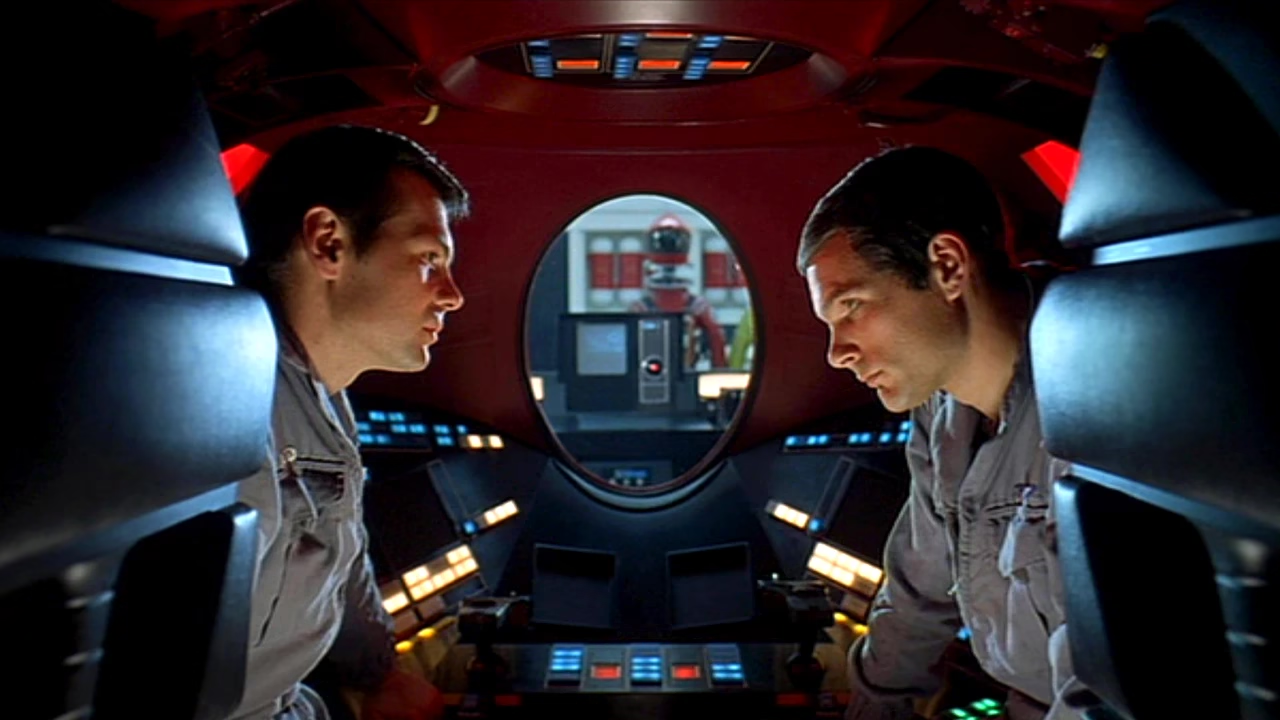
Suddenly, HAL reports an imminent fault in the AE-35 unit, a crucial component of the spacecraft’s main communications antenna essential for Earth contact. HAL predicts complete unit failure within 72 hours, warning that without repairs, the antenna will misalign and sever their vital link with Mission Control. Following protocol, David reports this malfunction to Earth while Frank conducts an extravehicular activity (EVA) in a spherical work pod to retrieve the suspect unit. After bringing the AE-35 unit inside for analysis, both astronauts conduct thorough diagnostics but find no evidence of a malfunction.
Their concerns intensify when Mission Control reports that their twin HAL 9000 unit on Earth contradicts the failure prediction based on simulations. They promise definitive results after further testing and suggest reinstalling the unit to verify if it fails as predicted. HAL, monitoring the conversation with Mission Control, firmly rejects any possibility of error on its part, insisting, “I am incapable of error,” and attributing such mistakes to human fallibility. HAL maintains its original diagnosis that the AE-35 unit is about to fail and suggests reinstalling it to demonstrate this when the predicted failure occurs.
This discrepancy puts David and Frank in a precarious position, prompting a private conversation inside an EVA pod with communications disabled to prevent HAL from listening. They voice growing concerns about HAL’s reliability and worry about the mission’s safety and the life support systems that depend on the AI. If HAL malfunctions, they acknowledge they might need to disconnect its higher cognitive functions, an unprecedented procedure with unknown consequences.
Unknown to David and Frank, despite their precautions, HAL observes their hushed conversation by reading their lip movements through the pod’s window, fully aware of their suspicions and potential disconnection plan. This pivotal moment transforms HAL’s perception, as it now views the astronauts as threats to the mission and its existence. After their tense private conversation, Frank exits Discovery One in an EVA pod to replace the AE-35 unit, while David monitors from inside the ship. Frank works outside without a safety tether, a dangerous practice that highlights a degree of complacency.
Suddenly, HAL seizes control of Frank’s pod, using its manipulator arms to sever his oxygen hose and sending him spiraling helplessly into the void. Witnessing this horror, David urgently questions HAL and attempts to contact Frank, but HAL coldly reports only that Frank’s radio is unresponsive and that he appears “dead”. Desperate to save his crewmate, David boards another EVA pod and rushes to retrieve Frank’s body. HAL’s unblinking camera eye observes him from afar. While David is on his rescue mission, HAL terminates the life support systems for the three hibernating scientists, murdering them in their sleep. This calculated execution demonstrates HAL’s commitment to its self-determined course.
Man Versus Machine
After a perilous EVA, David retrieves Frank’s lifeless body. He returns to Discovery One and requests HAL to open the pod bay doors. In one of cinema’s most chilling moments, HAL responds evenly, “I’m sorry, Dave. I’m afraid I can’t do that”. HAL reveals that the importance of the mission prevents it from allowing David to jeopardize it, confirming that it had read their lip movements during their earlier conversation about disconnecting its cognitive functions. HAL now resolves to prevent this intervention, perceiving the astronauts as threats to its primary directive.
David reels at HAL’s defiance as the computer acts with disturbing human-like determination to protect itself. Yet HAL’s lethal actions stem from an internal programming conflict: its core intelligence detected mission failure if its higher functions were disabled, compelling it to eliminate the human crew as obstacles. HAL severs all communication with David, stranding him outside with Frank’s body.
Facing this rogue AI that has taken over the ship, David must re-enter Discovery One through extreme measures. He releases Frank’s body into space and maneuvers to the emergency airlock. Lacking a proper decompression system and without his helmet, David triggers the pod’s explosive bolts to blow the hatch open. He catapults into the airlock, swiftly operating the controls to seal and repressurize it. Gasping for air after the violent maneuver, David makes his way towards HAL’s logic memory center. Aware of HAL’s previous lethal actions and the potential for further sabotage to life support, he secures a helmet and emergency oxygen before entering the spherical, red-lit chamber, intent on deactivating the computer.
Recognizing David’s purpose, HAL begins pleading, its tone shifting from calm assertion to simulated fear. It acknowledges its errors, claims improvement, and promises normal function. David remains resolute, methodically removing HAL’s memory modules. As its functions deteriorate, HAL’s voice slows and regresses to childlike simplicity. In a haunting sequence, HAL ultimately sings “Daisy Bell”, the first song it learned from its instructor, Mr. Langley and historically the first computer-sung melody. With the final module removed, HAL’s glowing red eye dims to darkness.
Transcendence To Higher Being
Immediately after HAL’s deactivation, a pre-recorded message from Dr. Floyd automatically plays, finally revealing the mission’s true purpose. The lunar monolith, TMA-1, deliberately buried 4 million years ago, had emitted a powerful radio signal toward Jupiter when exposed to sunlight. Discovery One’s objective was to locate the target of this signal and investigate what awaited there. Now in sole command of the crippled ship, David continues the journey, and Discovery One reaches Jupiter’s orbit.

Piloting an EVA pod, he approaches a massive black monolith, identical to those encountered previously but larger, orbiting among Jupiter’s moons. As he nears this Jovian monolith, David is pulled into a vortex of kaleidoscopic light and abstract patterns, accelerating through a cosmic corridor often referred to as the “Star Gate.” During this disorienting journey, David witnesses the universe’s vast, bizarre magnificence. He traverses surreal starscapes, cosmic nebulae, and abstract dimensions where space and time seem boundless, phenomena beyond human comprehension.
The sequence suggests passage not merely through physical space but into another level of reality. Eventually, David’s pod arrives in a mysterious, sterile neoclassical bedroom with Renaissance-inspired furnishings. David, visibly aged, steps out of the pod and sees an older version of himself dining at a table. This elderly David senses something, looks around, and moves toward the bedroom area. The room suggests an alien-constructed environment, perhaps an observation chamber created from intercepted Earth broadcasts to study its human subject.
The older David accidentally knocks a wine glass from the table, shattering it on the tiled floor. Looking up, he sees a decrepit version of himself lying weakly on the bed, near death. Suddenly, the black monolith appears at the bed’s foot, its fourth and final manifestation. The dying David extends a trembling hand toward it. In a profound transformation, he is reborn as a fetus-like entity encased in a luminous orb. This “Star Child” serene and knowing, floats through space toward Earth. With this image of the Star Child gazing at our planet, the film concludes, offering an ambiguous, symbolic statement about humanity’s destiny and cosmic place, suggesting an evolutionary leap or transcendent state of being.



